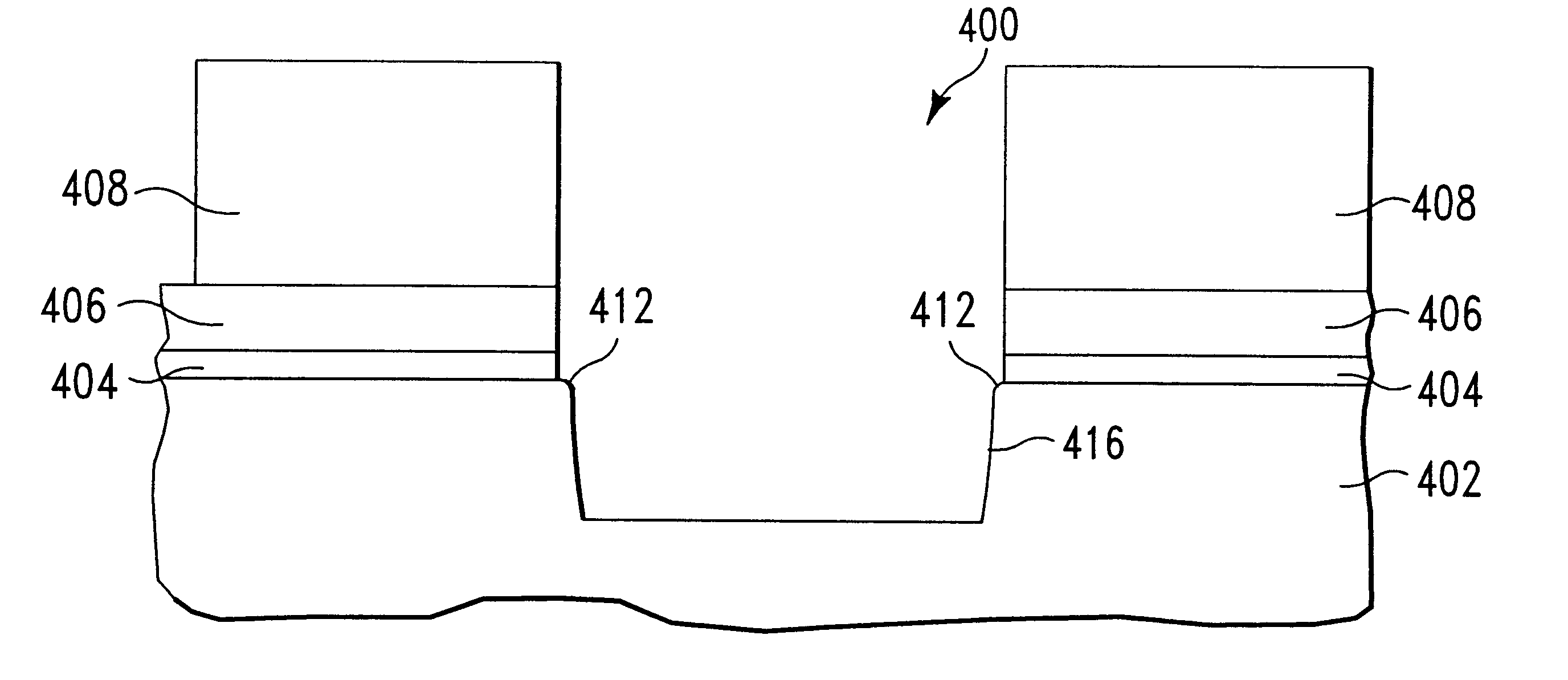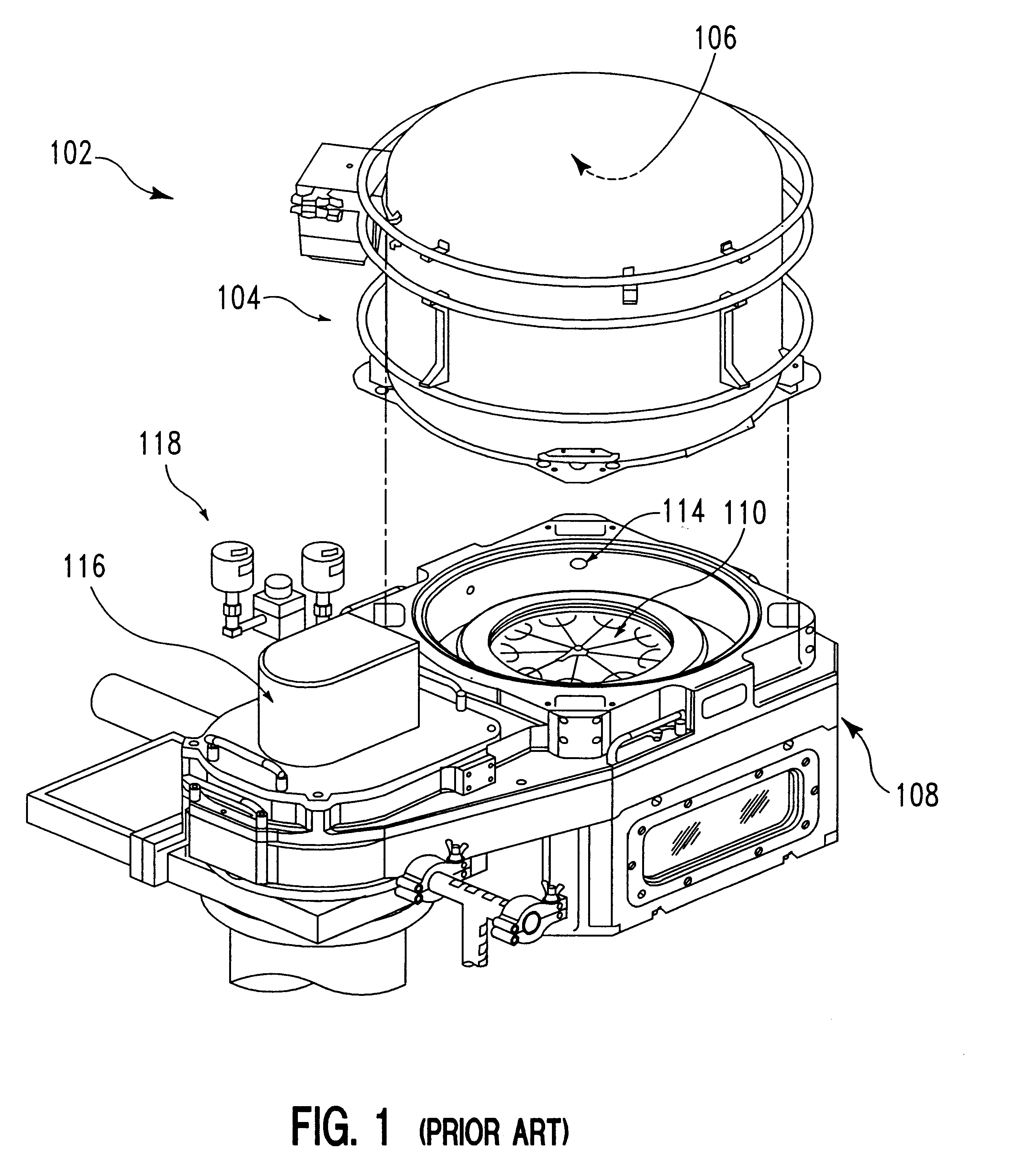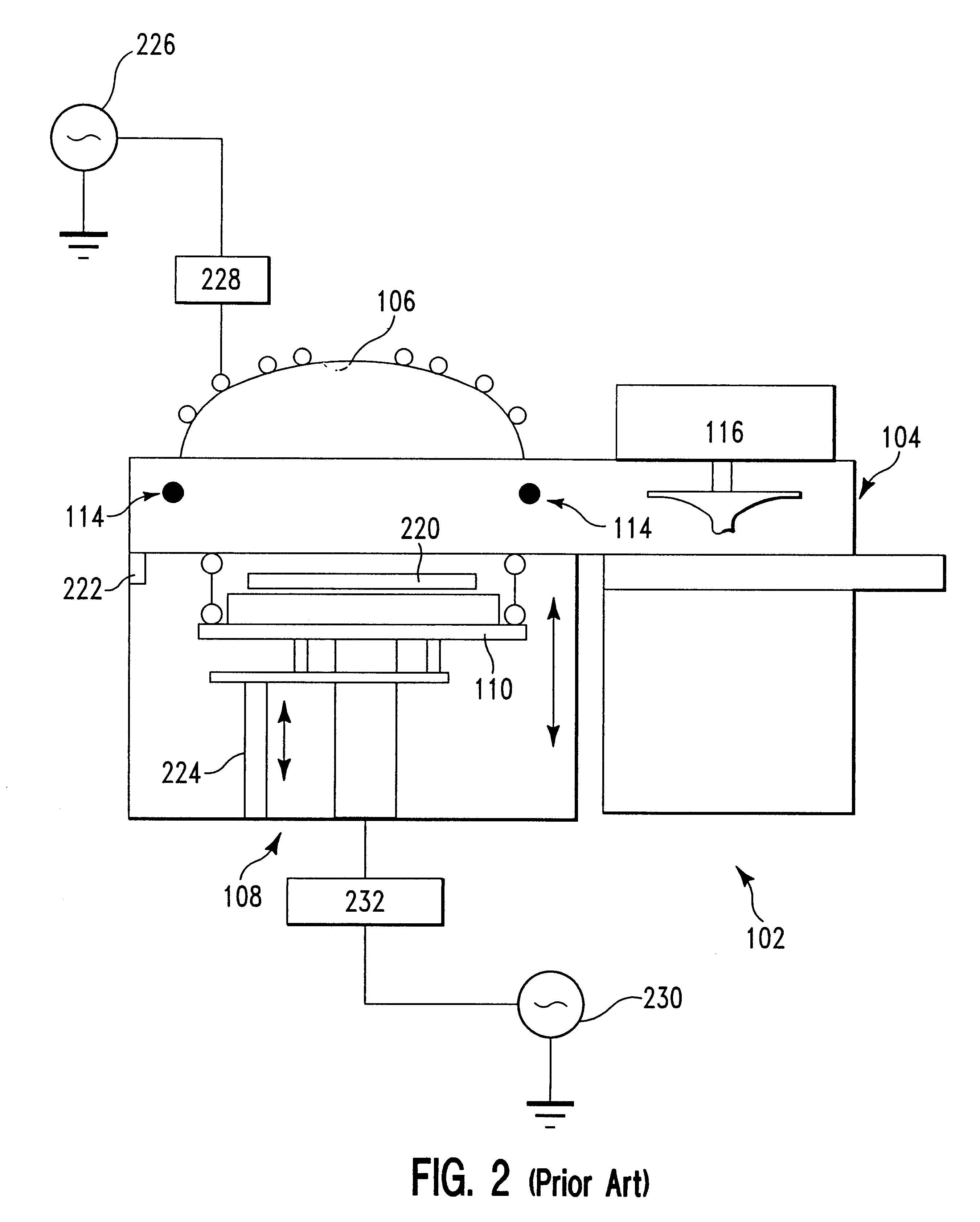Method for etching a trench having rounded top and bottom corners in a silicon substrate
a silicon substrate and trench technology, applied in the direction of basic electric elements, semiconductor/solid-state device manufacturing, electric devices, etc., can solve the problems of overlying deposited film layer electrical breakdown, high field stress in film, and edge leakag
- Summary
- Abstract
- Description
- Claims
- Application Information
AI Technical Summary
Problems solved by technology
Method used
Image
Examples
example two
The semiconductor structure 500 shown in FIG. 5A was the starting substrate for the second top corner rounding method. This structure includes the silicon nitride hard mask 506, and silicon oxide layer 504, deposited on a single-crystal silicon substrate 502, as previously described. The silicon nitride masking layer 506 had a thickness of approximately 2,000 .ANG.. The silicon oxide layer 504 had a thickness of approximately 150 .ANG..
The silicon oxide break-through step which also formed extension 508 was performed using a plasma generated from a plasma feed gas containing 40 sccm CF.sub.4, 75 sccm argon, and either 50 sccm CH.sub.2 F.sub.2 or 70 sccm HBr. The silicon oxide breakthrough step was performed using the following process conditions: 70 mTorr process chamber pressure; 1200 W source power; 70 W (-335 V) bias power; and 20.degree. C. substrate temperature.
FIG. 5B shows the structure 500 of FIG. 5A following the silicon oxide breakthrough step. There was a critical dimensi...
example three
A two-step silicon etch process was then performed to provide a trench with a rounded bottom. In the first silicon etch step, the trench was etched to a depth of 2,500 .ANG. using 90 sccm Cl.sub.2 and 5 sccm O.sub.2. The first silicon etch step was performed using the following process conditions: 25 mTorr process chamber pressure; 1000 W source power; 200 W (-500 V) bias power; and 20.degree. C. substrate temperature.
In the second silicon etch step, the trench was etched to a final depth of 3,000 .ANG. using 90 sccm Cl.sub.2, 5 sccm O.sub.2, and 10 sccm SF.sub.6. The second silicon etch step was performed using the following process conditions: 55 mTorr process chamber pressure; 1000 W source power; 200 W (-520 V) bias power; and 20.degree. C. substrate temperature. The increased process chamber pressure, in combination with the presence of SF.sub.6, during the second silicon etch step enhanced the lateral etching, resulting in rounding of the bottom trench corners.
Using prior art ...
PUM
| Property | Measurement | Unit |
|---|---|---|
| pressure | aaaaa | aaaaa |
| pressure | aaaaa | aaaaa |
| sidewall angle | aaaaa | aaaaa |
Abstract
Description
Claims
Application Information
 Login to View More
Login to View More - R&D
- Intellectual Property
- Life Sciences
- Materials
- Tech Scout
- Unparalleled Data Quality
- Higher Quality Content
- 60% Fewer Hallucinations
Browse by: Latest US Patents, China's latest patents, Technical Efficacy Thesaurus, Application Domain, Technology Topic, Popular Technical Reports.
© 2025 PatSnap. All rights reserved.Legal|Privacy policy|Modern Slavery Act Transparency Statement|Sitemap|About US| Contact US: help@patsnap.com



